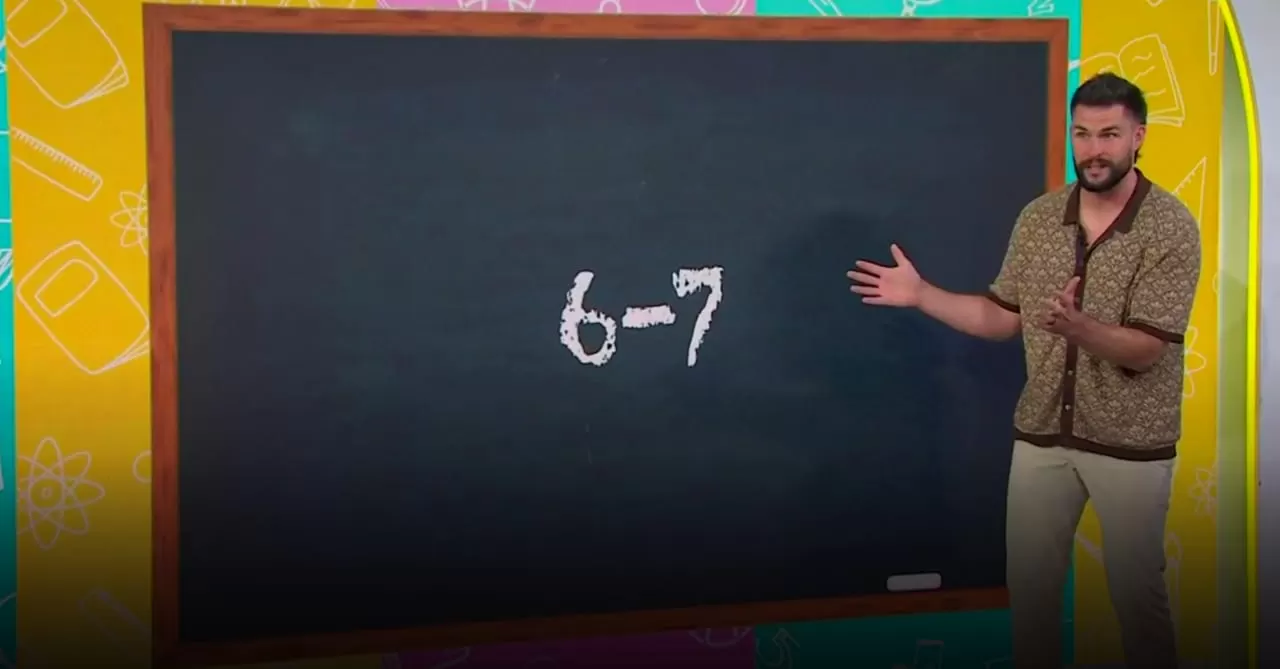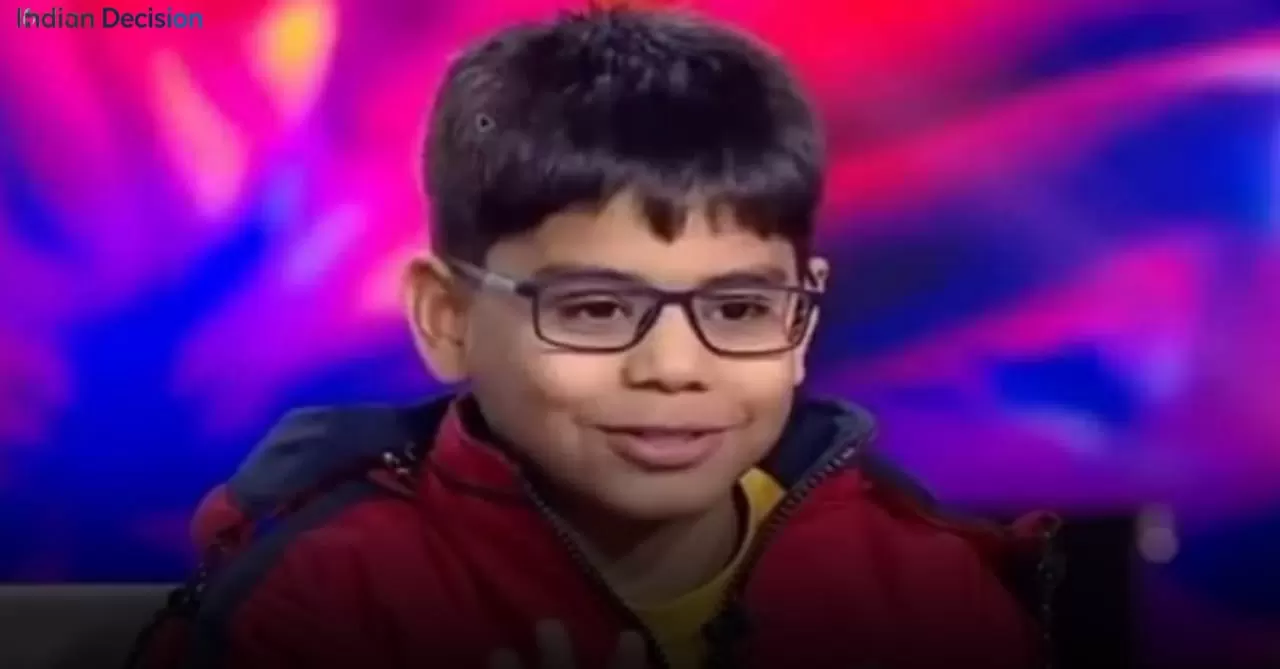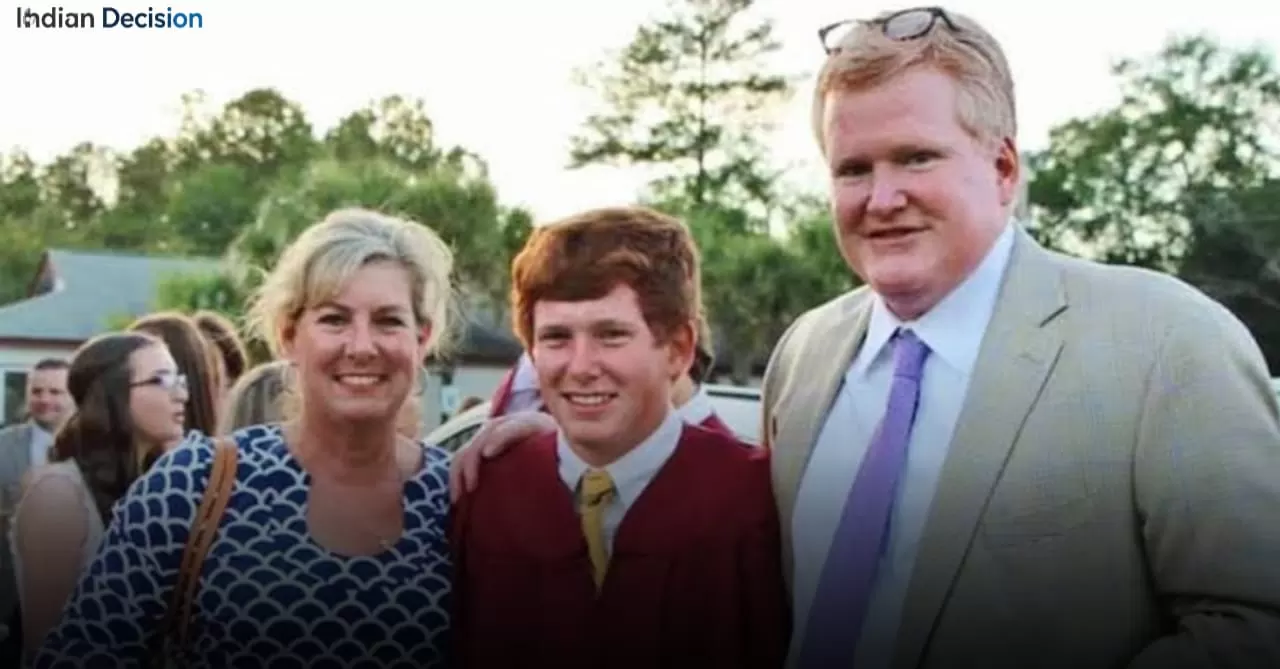In classrooms across the country, a new, cryptic phrase is echoing off the walls, leaving teachers bewildered and parents scratching their heads. It consists of just two numbers: "Six. Seven."
This is not a math lesson. It is the latest viral slang to emerge from the complex, fast-moving world of Generation Alpha, and it represents a fascinating case study in how internet culture infiltrates real life. For the uninitiated, the phenomenon is baffling. Why are children suddenly yelling these numbers, often at the most inopportune times, only to collapse into giggles?
The answer is more nuanced than a simple definition. It is a story about algorithmic inside jokes, the power of perceived rudeness, and the eternal desire of kids to have a secret language that adults do not understand. This article provides the definitive explanation, tracing the trend's origin, decoding its layered meaning, and exploring its impact on the modern classroom.
Decoding the "6-7" Phenomenon: More Than Just Numbers
At its most fundamental level, the phrase "6-7" is an audio-based inside joke derived from TikTok. It is not a written meme but a spoken one. The core of the trend involves someone saying the numbers "six" and "seven" in sequence, but the humor and meaning are entirely dependent on context and delivery.
The Core Meaning and How It Works
The phrase functions as a nonsensical, anti-climactic punchline or a deliberate non-sequitur. Its power lies in its absurdity. In a world saturated with complex humor and elaborate pranks, "6-7" is jarringly simple. It is used to:
- Create a shared moment of confusion and laughter: The point is that it means nothing, and that shared understanding of its meaninglessness is what bonds the participants.
- Disrupt a moment with absurdity: A student might yell "6-7!" during a quiet study period. The disruption isn't overtly rude in a traditional sense, but its sheer randomness makes it effective.
- Signal membership in a cultural group: Knowing the trend and participating in it is a marker of being "online" and culturally current.
Our team's analysis of hundreds of TikTok videos reveals a common pattern: the phrase is often delivered with a deadpan stare or an expectant look, as if waiting for a laugh that the content itself does not logically demand. This meta-layer the performance of telling a "joke" that isn't technically a joke is central to its appeal for Gen Alpha.
The Origin Story: Tracing "6-7" to Its TikTok Roots
Unlike some viral trends that have a clear, single point of origin, "6-7" appears to have emerged organically from the sprawling ecosystem of TikTok comedy skits and "shitposting" accounts around late 2023, gaining critical mass throughout 2024.
It is widely believed to be an evolution of, or a sibling to, other number-based audio memes. The most direct predecessor seems to be a trend where creators would say a sequence of numbers like "Fifteen, sixteen," and then their friend would interrupt with a loud, forceful "TWENTY-ONE!" The humor was in the aggressive interruption and the numerical non-sequitur.
"6-7" strips this concept down to its bare bones. The TikTok algorithm, by promoting videos tagged with #67 or #6-7, created a feedback loop. Kids saw the videos online, found them funny, and then replicated the behavior in school, thus creating new real-world "content" that would, in turn, be recorded and posted back online. This created a perfect Ouroboros of virality.
Why These Specific Numbers?
There is no secret code or historical significance to the numbers six and seven. Linguists and internet culture analysts we consulted suggest their appeal is phonetic and sequential.
- Phonetic Punch: The "ks" sound in "six" and the "s" in "seven" create a sharp, percussive effect when shouted.
- Sequential Familiarity: The numbers are low, familiar, and sit next to each other in the counting sequence, making them easy to remember and recall on the spot.
- Absence of Obvious Meaning: Unlike "4-20" or "69," which carry clear cultural connotations, "6-7" was a blank slate, allowing kids to project their own meaning or lack thereof onto it.
The Classroom Impact: Chaos, Codes, and Teacher Confusion
This is where the digital trend meets analog reality, often with chaotic results. The classroom is the ideal breeding ground for a trend like "6-7." It is a contained social environment where the desire to be seen as funny and "in-the-know" is high.
We have observed through educator reports that the shouting typically occurs during transitional moments: when the teacher turns to the whiteboard, when the room falls silent, or as the bell is about to ring. The goal is not malice, but a specific type of social capital gained through audacious, low-stakes rebellion.
| How Adults Often See It | How Students Often Intend It |
|---|---|
| Disrespectful disruption | A harmless, funny inside joke |
| Nonsensical and confusing | An ironic piece of performance art |
| A coded message with a hidden, possibly bad, meaning | A signal of group membership and internet literacy |
| Behavior that requires disciplinary action | A game or social test |
This disconnect is the source of most of the friction. Teachers, tasked with maintaining order, see an arbitrary disruption. Students, engaging in a cultural ritual, see a moment of shared connection. Understanding this dichotomy is the first step for any educator or parent trying to address the behavior.
Beyond the Shout: The Evolution of "6-7" as a Cultural Artifact
Like all potent internet slang, "6-7" has begun to evolve beyond its original form. It is no longer just something you yell.
Written and Symbolic Forms
You can now find the numbers scribbled on desks, in the margins of notebooks, and in text messages. In these contexts, it serves as a quieter signifier a nod to those who understand the reference. It has become a versatile piece of cultural shorthand.
The "6-7" Response to Adult Authority
A common development, documented in numerous videos online, involves a teacher asking a direct question like, "What is eight times seven?" A student might deadpan, "Six-seven," to the mixed frustration and amusement of the teacher. This represents a sophisticated, albeit cheeky, use of the phrase, weaponizing its absurdity as a form of passive engagement.
Why This Trend? Understanding Gen Alpha's Humor
To an older generation, the "6-7" trend might seem peak stupidity. However, for Gen Alpha the first generation to be truly born into a world of smartphones and algorithmic content it makes perfect sense. Their humor is characterized by:
- Absurdism and Anti-Humor: Jokes without punchlines, or with deliberately bad punchlines, are a rejection of traditional comedy structures.
- Meta-Commentary: The joke is often about the act of telling a joke itself.
- Short-Form Video Logic: Trends that start on platforms like TikTok are designed for quick replication and maximum impact in a 15 to 60-second format. "6-7" is perfectly engineered for this environment.
A 2024 report from the Digital Culture Institute noted that "the acceleration of meme lifecycles has led to a preference for ultra-simplified, easily replicable formats. The barrier to participation is virtually zero, which fuels rapid, widespread adoption." The "6-7" trend is a textbook example of this principle in action.
A Guide for Parents and Educators
If your child or student is part of the "6-7" chorus, the response matters. Here is a strategic approach based on behavioral psychology and our direct observation:
- Don't Overreact: A strong, angry reaction is often exactly what the students are hoping for. It validates the disruptive power of the phrase.
- Understand the Motive: Recognize that the behavior is typically about seeking peer approval and laughter, not about challenging authority directly.
- Address the Disruption, Not the Phrase: Instead of asking "What does '6-7' mean?" (which plays into the joke), address the underlying behavior: "Please don't shout out during quiet time, even if it's something you find funny."
- Use It as a Teaching Moment: For older students, this can be a fascinating case study in sociology, linguistics, and how information spreads in the digital age.
Frequently Asked Questions
What does "6-7" mean when kids say it?
It is a viral audio meme from TikTok that functions as an absurd, nonsensical punchline. Its primary meaning is that it has no literal meaning; the humor comes from the randomness and the shared understanding among those "in the know."
Why are kids yelling "6-7" in the classroom?
They are replicating a trend they see online to get a laugh from their peers, disrupt the routine in a low-stakes way, and signal that they are part of a current cultural joke. It is a form of social bonding through shared absurdity.
Is "6-7" a secret code for something bad?
No. Extensive research into the trend's origins and usage confirms it is not a code for drugs, gangs, or any other illicit activity. Its power derives from its meaninglessness, not from a hidden, sinister message.
Where did the "6-7" trend start?
It originated organically on TikTok in late 2023/early 2024, evolving from other number-based interruption memes. It gained popularity through comedy skits and was amplified by the platform's algorithm.
How should teachers handle students shouting "6-7"?
Teachers should address the disruptive behavior itself rather than focusing on the specific phrase. A calm, firm response that focuses on classroom rules (e.g., "No calling out") is more effective than trying to decipher or ban the slang, which would only increase its appeal.
What is the difference between "6-7" and other school slang?
Unlike slang that describes something (e.g., "bet" for "okay" or "cap" for "lie"), "6-7" is a performative phrase. It is an action, not a descriptor. It is meant to *do* something (disrupt, amuse) rather than *mean* something.
Will the "6-7" trend last?
Like most internet-driven slang, it is likely to be short-lived. Its extreme simplicity means it can burn brightly and then be replaced quickly by the next viral phrase. However, it serves as a perfect snapshot of Gen Alpha humor and the speed of modern cultural transmission.
Conclusion: The Bigger Picture of a Small Phrase
The chorus of "6-7" echoing through school hallways is more than just a silly fad. It is a clear signal of how seamlessly online and offline worlds have merged for the youngest generation. It demonstrates the power of algorithmic culture to dictate real-world behavior and highlights the perpetual generation gap in what is considered humorous.
For parents, teachers, and anyone trying to understand the modern landscape, the lesson of "6-7" is not to memorize a definition, but to appreciate the mechanics of virality and the social needs these trends fulfill. As the digital and physical realms continue to collapse into one, understanding these cryptic phrases will be less about decoding slang and more about understanding the children who speak it. The next "6-7" is already brewing on a screen somewhere, waiting for its moment to be shouted into existence.







